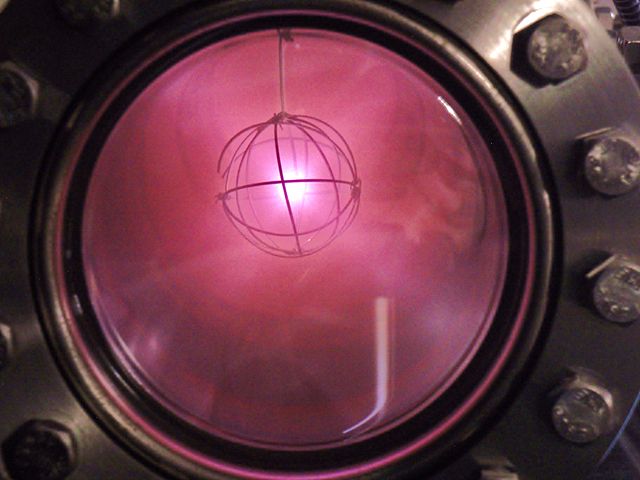A fusor is a device that uses an electric field to heat ions to a temperature in which they undergo nuclear fusion. The machine induces a potential difference between two metal cages, inside a vacuum. Positive ions fall down this voltage drop, building up speed. If they collide in the center, they can fuse. This is one kind of an inertial electrostatic confinement device – a branch of fusion research.
A homemade fusor
Farnsworth–Hirsch fusor during operation in so called "star mode" characterized by "rays" of glowing plasma which appear to emanate from the gaps in the inner grid.
Image showing a different grid design.
Nuclear fusion is a reaction in which two or more atomic nuclei, usually deuterium and tritium, combine to form one or more different atomic nuclei and subatomic particles. The difference in mass between the reactants and products is manifested as either the release or absorption of energy. This difference in mass arises due to the difference in nuclear binding energy between the atomic nuclei before and after the reaction. Nuclear fusion is the process that powers active or main-sequence stars and other high-magnitude stars, where large amounts of energy are released.
The Sun is a main-sequence star, and thus releases its energy by nuclear fusion of hydrogen nuclei into helium. In its core, the Sun fuses 500 million tonnes of hydrogen each second.
The Tokamak à configuration variable, research fusion reactor, at the École Polytechnique Fédérale de Lausanne (Switzerland).





